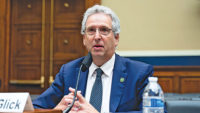Bechtel Energy Inc. has been given its second go-ahead in three months to start full construction of a large liquefied natural gas megaproject in Texas, with developer NextDecade’s July 12 announcement of a final notice for the firm to proceed on the Rio Grande LNG export terminal in Brownsville, under a phase one lump-sum EPC contract valued at about $12 billion.
The first phase consists of three liquefaction trains and two LNG tanks set to produce 17.6 million tons annually. With future potential expansion of two more trains to full scale, the facility could produce 27 million tons of LNG annually, said Paul Marsden, Bechtel Energy president of global business.
NextDecade also announced its final investment decision for phase one, stating that the $18.4-billion financial package “is the largest greenfield energy project financing in U.S. history.” It includes about $5.9 billion of commitments from Global Infrastructure Partners, GIC, Mubadala Investment Co. and French energy firm TotalEnergies, under a joint venture agreement. Patrick Pouyanné, chairman of the latter firm, said “LNG from this first phase will boost [its] export capacity to over 15 million tons per year by 2030.”
Long Financing Road
NextDecade had planned to finalize the Rio Grande investment in 2019 and start construction in 2022, with one year added to the original target completion date of 2026, due to tighter credit, market shifts and numerous project opponent lawsuits. In what were long-anticipated actions, the Federal Energy Regulatory Commission approved the project on April 21 after re-evaluating its effect on climate change and on local communities as ordered by a U.S. appeals court in 2021.
Also approved by FERC related to the Rio Grande project is the estimated $2.4 billion, 135-mile Rio Bravo pipeline, to be built separately by energy firm Enbridge, which will deliver 4.5 billion cu ft of Permian gas per day to the export facility.
On July 12, opponents filed a new lawsuit challenging FERC’s re-approval.
NextDecade told regulators last quarter of its final investment delay to “late June”—also extending what was then an estimated $11.5-billion EPC first-phase price agreement with Bechtel Energy to June 15—and saying at the time that pricing would be determined with that investment announcement.
The overall LNG facility will occupy 750 acres of greenfield, including 182 acres of wetlands, on a 984-acre waterfront tract in the Port of Brownsville, what is described as the last major deepwater port in Texas that has no large fossil fuel projects. A NextDecade spokeswoman said the project has "set aside about 4,000 acres" for wetland mitigation and habitat protection. The project also would include a planned carbon capture system that its developer said can store an estimated 90% of carbon dioxide emissions, but local opposition remains to the storage approach and other project impacts.
In advance of construction start at the Rio Grande site, Bechtel has released more than 70 purchase orders, including for civil, structural, mechanical, piping, and instrumentation, Marsden told ENR in an email. Baker Hughes and Air Products were selected in July to supply liquefaction equipment and technology,
He said that the project is expected to create 5,000 jobs during peak construction. The project has a goal to hire at least 35% of its workforce from the Rio Grande Valley, a NextDecade spokeswoman said at a local event in May.
"Labor has grown as an inflationary concern for everyone in the industry," Marsden told Reuters. "We need to actively forecast and manage labor availability and supply chain like never before."
Bechtel has already been working on the project for five years under several limited notices to proceed.
More Bechtel LNG Links
Rio Grande’s final financing decision follows the March announcement by developer Sempra Infrastructure to okay the $13-billion Port Arthur LNG project first phase, with Bechtel Energy also named as EPC for the export plant in Port Arthur, Texas. Set to come on line in 2027 and 2028, it includes an amended $10.5-billion contract, up from about $8.9 billion in 2020 when proposed.
A similarly sized Port Arthur phase 2 project is under development, the company said, but it has faced legal battles with activists over air pollution impacts.
UPDATE: The firm asked FERC in June for final phase two approval, claiming it has been under review for four years, but the agency on July 27 removed the the project rom its approval agenda with no explanation provided.
The contractor also is adding a 10-million-tpy expansion to an existing export plant in Corpus Christi for Cheniere Energy, the largest U.S. gas exporter, and was awarded a contract in February of undisclosed value to complete a front-end engineering and design (FEED) study to expand the Sabine Pass LNG terminal in Louisiana to add nearly 20 million tpy of new capacity to its existing 34 million tpy. If approved by regulators, work would start by late 2025 with operation estimated in 2032. Cheniere has not made a final investment decision on the expansion nor released any firm cost estimate.
Bechtel has a workforce of more than 3,000 on its LNG projects, Marsden told Reuters.
Outlook for Broader Sector Growth
According to a report last fall by the U.S. Energy Information Agency, seven LNG export terminals have been built along U.S. coastlines in as many years, mainly in Texas and Louisiana. Three more are under construction, and federal regulators have approved 11.
Venture Global recently announced a final investment decision for a second phase project at its Plaquemines Parish LNG export facility in Louisiana after securing $7.8 billion of financing, said Reuters, with the first phase being built by contractor Zachry Group and engineer KBR Inc since 2022 now set to begin a phased operation startup in the second half of 2023 and full operation in late 2024. The team also has been issued notice to continue construction of phase 2, which would operate in 2025.
The developer of Gulfstream LNG said the planned greenfield project, also located in that parish on 500 acres, received a U.S. Energy Dept. okay in early July to export through 2050, up to 4 million tons per year of LNG to countries with a U.S. free trade agreement. Developer Gulfstream LNG Development LLC said earlier this year the facility is being designed based on use of mid-scale modular liquefaction trains powered by low carbon and renewable fuels. "We are progressing our engineering and project development efforts, as well as discussions with potential equity investors,” said CEO Vivek Chandra, but a spokesman did not reply to a query on selection of its contractors.
In Canada, Black & Veatch said July 10 it had been awarded a front-end engineering and design contract, with South Korea-based Samsung Heavy Industries, for the Nisga’a Nation’s Ksi Lisims LNG project in northern British Columbia. Designed to produce up to 12 million metric tons of LNG per year for export, it is set to start commercial operation in 2028.
U.S. LNG exports could reach 12.1 billion cu ft per day this year and 12.7 bcfd in 2024, according to S&P Global Commodity Insights. Global LNG demand is set to grow from 399 million tons in 2022 to 627 million tons by 2035, more than a 50% increase, said Michael Stoppard, its global gas strategy lead.







Post a comment to this article
Report Abusive Comment